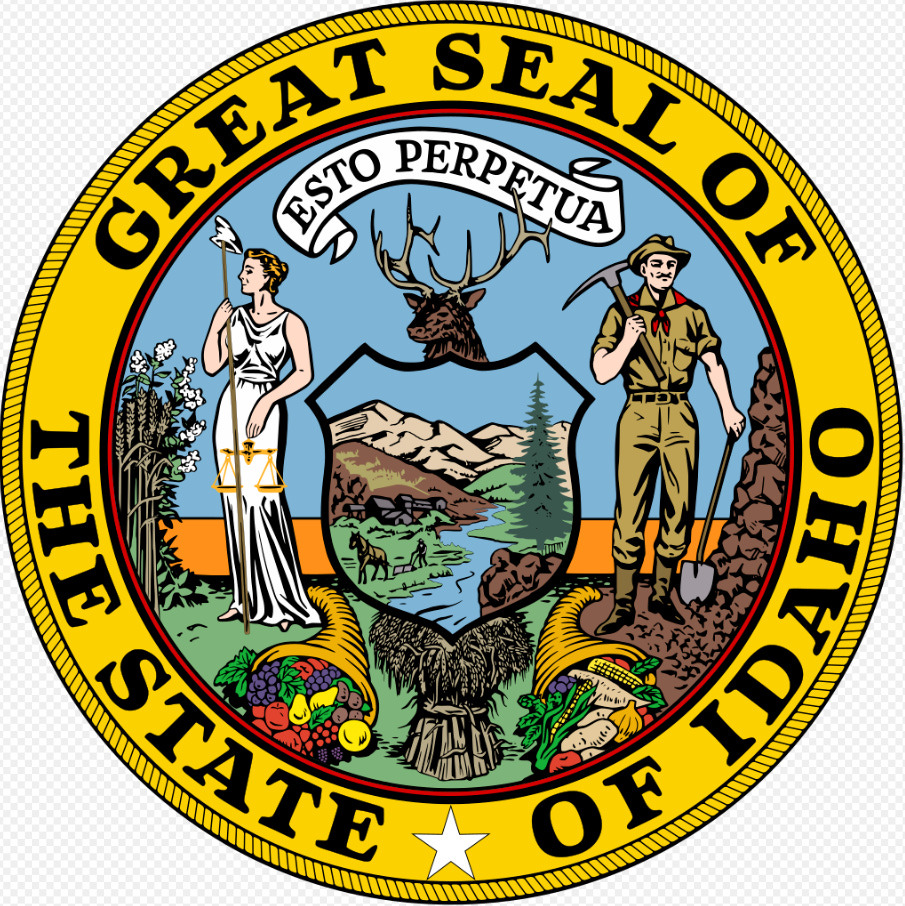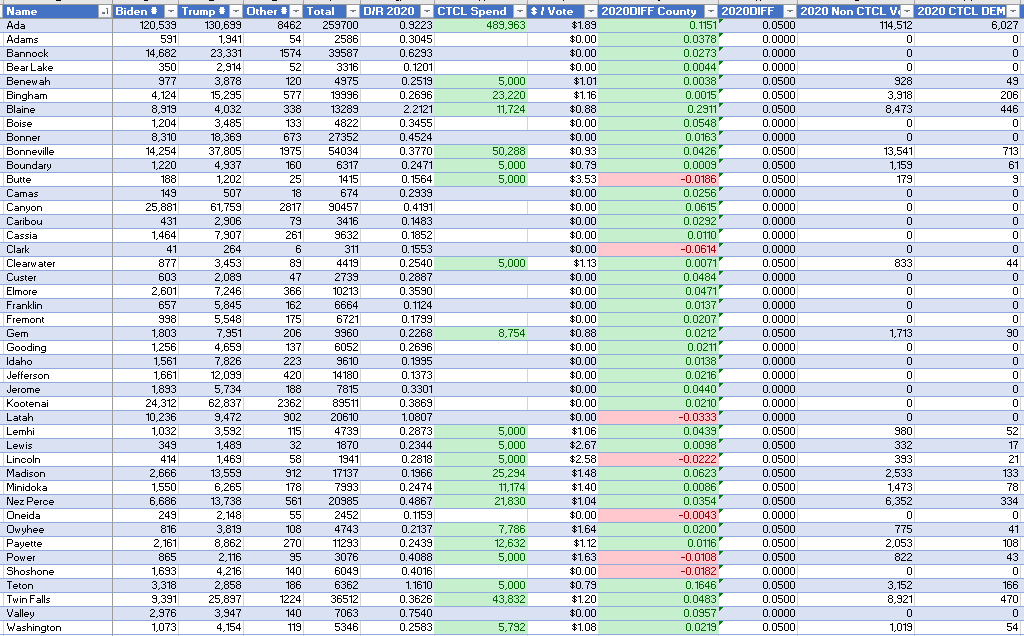Introduction
Question: Is CTCL misrepresenting the information on the IRS Form 990 stating that the PURPOSE of the grants were to help support the SAFE administration of public elections during the Covid-19 pandemic?
Background
This is Part XXXVI in The NGO Project series which examines the role NGOs had in determinative outcomes in the 2020 Presidential Election. In prior articles, I focused on the effect the Center for Technology and Civic Life (CTCL) had on AZ, CO, CT, GA, IA, IL, IN, ME, ME, MI, MN, MT,NC, NH, NJ, NE, NM, NY, OH, OR, PA, RI, TN, TX, UT, VT, VA, WA and WI.
This article will solely focus on CTCL in Idaho (ID).
Calculation Basis
The calculation basis was previously explained in detail here. In this article, I do make one adjustment and that is to calculate the 2020DIFF factor by weighted average rather than arithmetic average.
Analysis
21 of 44 ID counties (22%) received CTCL grants.
Total votes cast in CTCL counties were ~ 496,102 (57%) and NonCTCL counties was ~ 371,832 (43%). To state it a different way, on a per county basis, CTCL had the opportunity to influence 57% of ID voters.
The total amount of grants to ID was ~ $757,289 and the value of individual grants ranged from ~ $5,000 to $490,000.
Idaho is really all about Ada County for the most part.
This table includes the top 5 CTCL grants by county.
$632,597 of the grants (84%) were focused in the 5 counties above. The $/vote spent by CTCL in these five counties range from $0.93/vote to $1.89/vote (all parties). The vote totals in these 5 counties account for ~45% of the votes in ID. 77% of that was in Ada County where Boise is located.
To state that a different way, 84% of the grants were spent on 45% of the total votes cast in ID. Is that fair if this was all about a Plandemic?
The average 2016 D/R ratio for CTCL Counties was 0.402 (not weighted). The average 2016 D/R ratio for NonCTCL Counties was 0.311 (not weighted). This means that CTCL grants were provided to more D leaning counties. The top 5 counties in terms grants had a average 2016 D/R ratio of 0.372.
To continue on this track, if you look at all the counties in 2016 that had a D/R ratio of less than one (R leaning counties), there were 42 of 44 (95%) counties. In total, they received ~ $745,000 in grants in 2020.
The top R leaning counties in 2016 that received CTCL money in 2020. These heavy R counties did not receive too much.
2020DIFF Calculated with Weighted Average
For this analysis, I used a slightly different way to calculate the 2020DIFF using a weighted average based on total votes in a county. This is what it looks like.
w = Total County Vote / Total State Vote
a = D/R2020 - D/R2016 (for CTCL Counties)
a' = a * w (per county)
2020DIFF = sum(a'1:a'n)
This method in theory permits a better correlation for D vote harvesting because it is weighted for counties with higher vote totals.
The 2020DIFF for CTCL counties is 0.084 and for NonCTCL counties it is 0.030. This means that the CTCL D vote harvesting factor in CTCL entities is 0.084-0.030 = 0.050 or ~ 5%. The number of D votes harvested based on this model is “conservatively” ~9,000 D votes or a potential swing of ~ 18,000 votes. Given that Trump beat Biden by ~ 267,000 votes, CTCL did not make much of a difference.
These are all of the CTCL counties.
Noteworthy R Stalwarts
These are all of the R stalwarts in terms of -2020DIFF which indicates higher R turnout as a ratio to D between 2016 and 2020. Only $15,000 of grants were provided.
Conclusion
CTCL issued ~$496,000 grants in ID and “purchased” ~ 9,000 more D votes in CTCL counties than would have occurred without CTCL grants. CTCL did not have much of an impact in ID.
That is ~ $51/Vote.
All Counties
References
CTCL IRS Form 990 (revised form from Jan 2022 used)
Telegram - https://t.me/electiondataanalyzer
Truth - @ElectionDataAnalyzer
The math here is simple, try this on your own. It is a model to look for trends, not an exact science.









